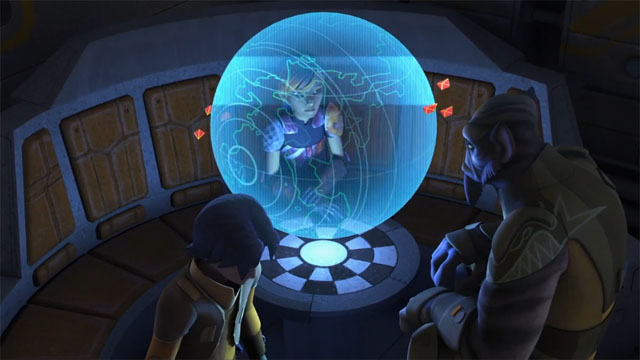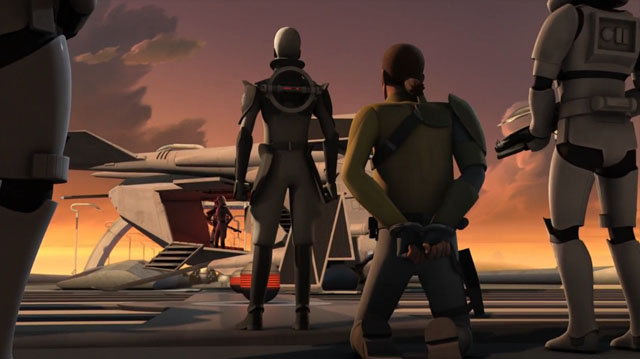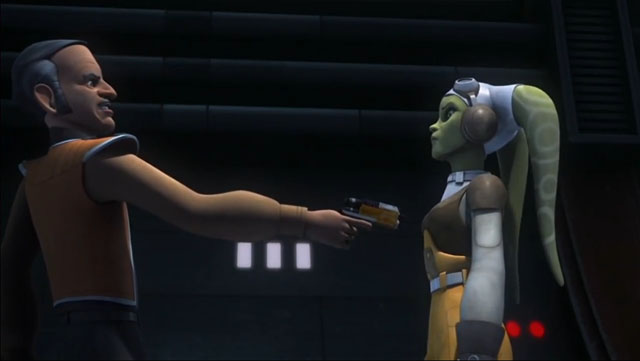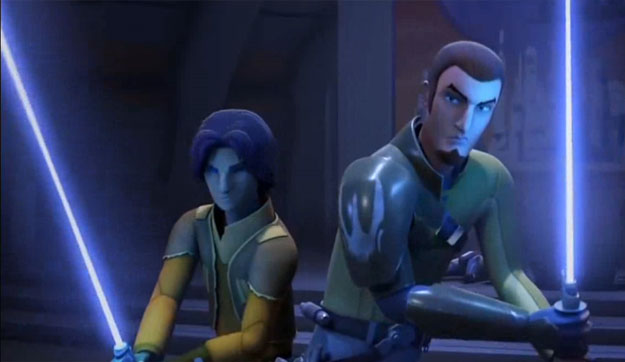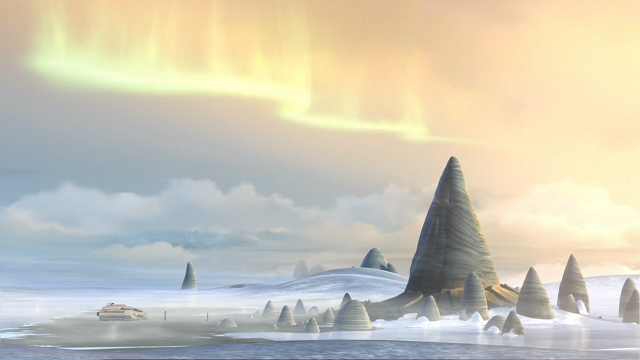
As the first season of Star Wars Rebels draws to a close (and lack of pre-viewing prospects prevents us from writing a piece involving the finale just yet) “Rebels Revisited” is looking back at the setting for a majority of the show’s events thus far. When the show was first teased to Star Wars fans, via propaganda posters and images at conventions, the creators told us that, unlike The Clone Wars that hopped from planet to planet on an almost weekly basis, Rebels would be much more focused and grounded, with a central base for the heroes and villains alike to operate from. Thus, we were introduced to Lothal.
The planet itself is not as visually striking as many planets within the GFFA, it does not have Tatooine’s stark wastes or Felucia’s vibrant life, but its origins as concept art by Ralph McQuarrie lend its landscapes a watercolor feel and texture. It is certainly beautiful in its own way, a very sparse and restrained beauty, with lone structures rising to the sky here and there and mysterious mounds studding the landscape. The sense that this is a large, and largely unspoiled planet permeates almost every outdoor shot of the show, be it the Ghost sitting by itself in the middle of a field that stretches from horizon to horizon, or Ezra resting his chin on the rail of the lonely communication tower he called home. Read More
